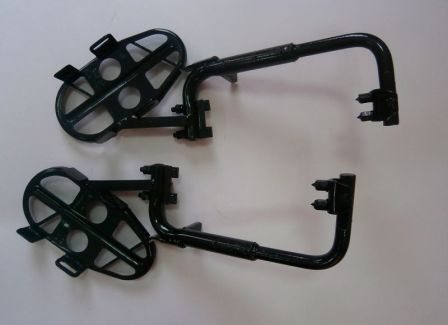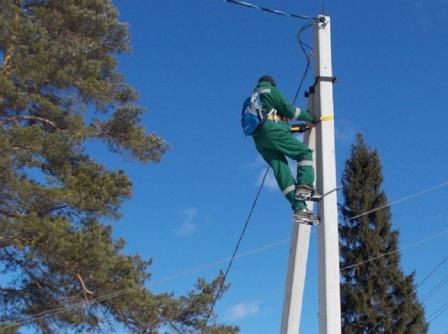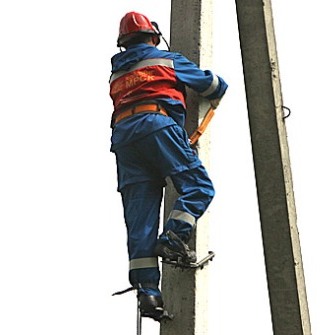Monter's nails - purpose, types, instructions for use
Monter's Claws are a special set designed to lift a person onto an overhead power line support. Monter's nails are two steel elements curved in a semicircle or at right angles with spikes, with the help of which retention with a support is carried out. These elements are connected to the foot pads, which have special straps that fix the electrician's feet while he climbs on the support.
The nail kit also includes a special restraint harness and sling that keeps the person on the support and also prevents the worker from falling in the event of a slip or nail damage.

Installation nails are intended for carrying out electrical work during the repair or revision of structural elements of overhead power lines, cable lines suspended on poles, communication lines, street lighting networks, as well as for lifting poles for other purposes.
Claws are an alternative to an aerial platform that is used to lift personnel to perform electrical work on power line poles. Significant advantages of electric nails are in their practicality, ease of use, as well as a reduction in the overall maintenance costs of electrical networks. In the case of using an aerial platform, the process of organizing the work becomes more complicated, it becomes necessary to devote additional time to the arrangement of the equipment and its grounding, the funds are spent on fuels and lubricants and on the maintenance of the equipment.
Also, the tongs of the tongs are used in cases where it is not possible to use an aerial platform due to lack of space to place equipment near the support of the power line or for other reasons.
But at the same time, the technician's claws are used to lift only one electrician onto the support. Therefore, if maintenance work needs to be carried out by two people, the aerial platform is indispensable.
Below we will consider what the nails are, depending on the design, and also give recommendations for their use.

Types of fitter nails
Power line supports are of different types, in particular the type of section. Reinforced concrete supports can be trapezoidal, rectangular, round, polygonal, cylindrical and conical. In some areas, there are still old wooden poles with a circular cross-section, as well as wooden poles with reinforced concrete attachments for various sections.
Accordingly, for lifting on different supports, nails of different designs are required. Consider the main types of monter nails.
Mixed nails of type KM-1, KM-2, KM-3, etc.They are used for lifting on wooden supports, including those with reinforced concrete attachments, as well as on supports of communication lines. Monter's crescent nails are not usually adjustable. The sickle, with the help of which the holding of the support is carried out, has a fixed size.
There are also so-called shafts for repair machines (universal shafts-LU-1, LU-2, etc.) - in fact, these are the same nails, the only difference is in their design characteristics and, accordingly, their field of application. The element that adheres to the support, the so-called shaft, is bent at a right angle. These sets are used to lift trapezoidal and rectangular reinforced concrete supports. The shaft opening is usually adjustable and allows you to adjust the size of the shaft for reinforced concrete supports of different sizes.
There are separate types of shafts designed for lifting on reinforced concrete supports with conical, cylindrical and polygonal shapes.
Monter's nails and shafts are used, as a rule, for lifting on the supports of power lines of voltage classes 0.4/6/10/35 kV. It is possible to use lifting shafts on unified supports of 110 kV and higher power lines.

Instructions for using bearings (shafts)
Consider the main recommendations regarding the implementation of electrical work using the installer's nails (shafts).
First of all, it should be noted that if it is necessary to carry out any work on power transmission networks, in particular on power lines, it is necessary to take the necessary safety measures.
The immediate execution of the work is preceded by a number of standard organizational measures, including approval of work, preparation of the necessary documentation, preparation of the workplace, as well as admission to work. All the listed activities are very important and the safety of the workers performing the work directly depends on the correctness of their implementation.
In this case, the danger lies in the fact that on the side of the consumer or the power source, voltage can be applied to live parts on which the electrician works - to the wires of the overhead power line.
It is also very important to be able to apply correctly electrical insulating means and personal protective equipment that will be used when performing work on power lines.
Monter's nails and shafts should be used only for those types of supports that are indicated in their passport data.
The sets of nails (shafts) must be periodically, in accordance with the established procedure in the enterprise (as a rule, once every six months), submitted for inspection in order to detect defects in a timely manner.
Before each work, the nails (shafts) must be checked for integrity, serviceability and the availability of appropriate data on the date of the next test. In this case, attention is paid to the reliability of buckles and the belts themselves, the integrity of bolted joints, the presence of pins and locknuts, the integrity of welds, studs and fasteners. The use of nails (holes) with metal cracks, burrs and other integrity violations is prohibited.
Workers who carry out work using claws and shafts must undergo additional training, a knowledge test and have an entry in the certificate of the ability to work independently in climbing.
When carrying out work with pliers, it is necessary to additionally use a safety belt for pliers.
Before climbing the support, it is necessary to check its integrity and stability. Climbing on a support through which earth fault currents have flowed is prohibited.
It is forbidden to make any changes in the construction of claws (shafts), their belts, belts and slings.
